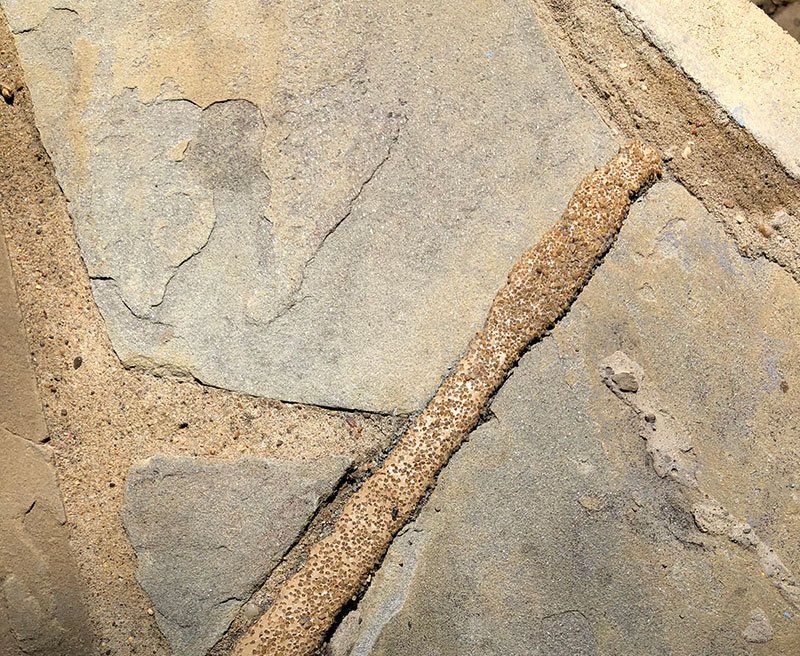Purchasing and maintaining a pool are likely two of the most prominent costs you’ll have as a homeowner. That hefty investment is something you’ll want to take care of for years to come – hopefully, for as long as you’re in the house!
With a pool comes a lot of work and occasional repairs to ensure that everything’s working safely and correctly. Many pool owners, though, don’t know all the inner workings of a pool and how they go together to prevent water leaks. Therefore, it could be difficult to know the root of a pool problem and when a repair or replacement is in order.
Today, we’re going to talk about pool mastic, a crucial part of your pool that does a lot behind the scenes.
What is Pool Mastic and Why Is It Important?
Pool mastic is basically another name for the expansion joint caulking around swimming pools. Some people call it pool caulk or sealant because that’s its job: to seal the pool so that no water leaks from the pool into the surrounding concrete.
If you have an in-ground pool that’s made of concrete, you’ll have what’s known as coping, or edging, around the pool.
The coping, in addition to creating a more finished look for your pool, essentially establishes a cap around the pool that prevents water from getting behind the pool walls when it’s splashed out of the pool.
Instead, water should flow to the drains to keep everything in good working order.
The mastic acts like a seal between pool coping and deck to keep your deck dry. If the pool caulking around coping wears down, then you could experience cracks in the concrete or rotted wood decking from spilled-over or leaking pool water, which can cause some severe damage over time.
How Does Mastic Work?
You can think of pool sealant like the caulk that goes around your bathtub to prevent water from leaking into your floor or walls. Mastic is basically a very strong, waterproof adhesive that’s almost putty-like in texture. The pool caulk sits between concrete sections to prevent any water from escaping through the cracks and causing damage to the pool’s concrete or your surrounding deck area.
The reason that pool mastic is like putty is that it allows it to expand and contract, much like silly putty can when you manipulate it with your hands. When the weather gets warm, your pool will expand slightly; in the cold, it will contract slightly.
Therefore, the sealant needs to allow for those times when the pool expands and contracts by giving the concrete a bit of space to move, while keeping the areas between the concrete sealed to prevent leaks.
What are Some Signs That I Should Replace Pool Mastic?
Mastic pool repair might be necessary after a few years to several years, depending on your area’s weather conditions, how often you use your pool, and other variables.
Swimming pool expansion joint repair may be necessary more often for people who live in areas where weather temperature fluctuates a lot because the consistent warping in concrete can wreak havoc on it and its mastic.
Knowing some common signs that your pool caulk has failed is essential information for pool owners. The symptoms can be sneaky sometimes, but here are a few things to watch for:
Cracks in the Decking
Perhaps one of the most tell-tale signs that you may need to replace pool mastic is cracks in your decking. Cracks signal that your pool may be struggling to keep up with settling and weather changes and that the mastic may not be expanding and contracting enough to allow for those changes.
When your pool doesn’t expand and contract properly – or it’s old and can no longer handle the movement – you’ll start to see cracks in the decking around the pool. They may be very minor at first, but they can quickly turn into a more significant problem.
Make it a point to check your pool’s decking every month and take note of any changes. If you notice more cracks than usual, it might be time for a caulk replacement and/or pool deck repairs.
Falling Pool Tiles
Falling pool tiles can happen for several reasons. The glue that bonds them to the pool could merely be wearing off, or extreme weather conditions could be contracting and expanding the pool so much that it causes the tiles to shift and fall out of place.
However, you should also consider this a possible sign that you need a pool sealant repair.
If the pool is warping severely in weather conditions, enough to make tiles fall off, then it’s possible that your expansion joint is overworking and could have caused the sealant to fail from so much movement.
Sealant is supposed to handle minor changes in your pool, like when new pools settle into the ground over time and when any in-ground pool undergoes some weather changes. But, after a period of severe weather changes that caused falling tiles, it’s a good idea to replace your sealant to ensure that it’s in top shape to handle the upcoming pool season.
Deck Heaving
Deck heaving is when your decking sits above the level of the pool. In other words, your deck may rise higher than it was before, which is typically level with the top of the pool. Deck heaving usually occurs from things like erosion or sudden shifts in temperature, which cause the pool and surrounding deck area to shift and rise.
Deck heaving itself isn’t necessarily a symptom of damaged pool sealant. Instead, your sealant can become damaged as a result of your deck warping so much that it rises above the pool’s level. Therefore, if you notice this change in your deck, you might want to consider having a professional check the bond between your coping and decking to ensure that your sealant’s hold is still firm.
Separation Between the Coping and Decking
If your mastic isn’t bonding the concrete sections of your pool like it used to, then you may start to see some separation between your deck and your pool’s coping. This could be a very thin gap at first, but over time, the hole will become thicker and can cause a lot of water to seep into the space, which can not only damage your deck, but can also ruin your pool.
As soon as you notice even a slight gap, you should call a professional to examine it further. It could be the beginning of your sealant’s failure, so it’s a good idea to get it checked out and replaced if needed before further damage occurs.
How and When Should It Be Replaced?
There is no one period of time that everyone should replace their pool’s caulking because every pool is different. There are a lot of variables that come into play with mastic, like weather conditions, pool use, an owner’s dedication to maintenance, and even the type of caulk used.
Your best strategy is to get in the habit of checking your pool monthly. Look inside the pool to see if tiles are shifting or falling off. Examine the deck, especially right near the coping, to check for any minor or significant cracks. If you notice any type of deck changes, it may be time for a replacement.
Should I Replace the Mastic Myself?
A lot of pool owners wonder if they should replace their pool’s mastic themselves. Although some DIYers might be able to handle the task, it’s not something most pool experts would recommend. If you have replaced mastic before and believe that you can do it correctly, then you may be able to save some money by repairing it yourself.
However, for those who don’t have experience replacing mastic, you can, and should, call a pool professional to do it for you. Doing so can ensure that the right materials are used for your pool and decking so that your new seal can last as long as possible.
Do I Need My Whole Pool Resurfaced?
Resurfacing a pool and replacing its mastic are two very different things, but they can go hand-in-hand depending on the amount of damage your pool has due to a failed sealant.
A pool resurfacing professional is someone you can call to find out if you might need to resurface your pool to fix falling tiles, upgrade a damaged liner, and more.
Conclusion: Guide to Pool Mastic and How to Replace It
Now that you know more about what your pool’s mastic is and why it’s important, we hope that you take the right steps to ensure that yours is in place and doing its job.
It’s crucial to periodically check for signs of failing sealant, like deck cracks, deck heaving, falling pool tiles, and gaps between the deck and coping, so that you know when a replacement might be necessary.
The quicker you act on repairing your mastic, the better it is for your pool and decking.
Contact the experts at Willsha Pools for more information and questions about pool sealant replacement and pool resurfacing.


